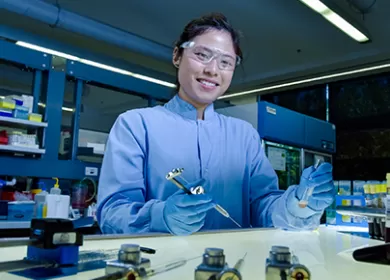Don’t have an account?
Select the donation type you’d like to make
Research Study Update: Patient perspectives on Serum Eyedrops (SED)
Take home Message
Patients who receive autologous eyedrops (whose own blood donation make up their eyedrop; AutoSED), reported improvements in their eye symptoms and wellbeing when using the drops. Patients who received SED made from volunteer donations (patient-tailored SED; PT SED) suggested improvements to the available communication materials. An improved fact sheet with more frequently asked questions added into the current brochure could better support and inform patients.
What was the question?
By exploring patient satisfaction and the impact of SED on dry eye symptoms, can we better support our patients?
Why is it important?
Not all patients who experience dry-eye are eligible for autologous SED (AutoSED), and for these people, patient-tailored SED (PT SED) or allogenic SED (AlloSED), made from volunteer blood are a desirable alternative.
Only a limited number of studies have investigated the effectiveness of serum eyedrops from the patient’s perspective. Lifeblood also changed packaging to the Meise vials in May 2020. We set out to find what SED patients thought of the product and packaging.
What did we do?
We conducted surveys and telephone interviews with AutoSED and PT SED patients. Within each group, we further split patients into “New” (those using SED for the first time) or “Existing” (for those who were already using SED). Both AutoSED and PT SED Existing patients received a survey when their next set of drops were ready. New patients received three surveys. They began with a baseline survey where no SED had yet been used to give us a starting point to measure any change in eye symptoms thereafter. We followed up with a 3-month and 6-month survey after they began using the drops, asking about SED usage, eye symptoms, health and thoughts on packaging. We also invited all participants to an optional phone interview to discuss their experience.
What did we find out?
Existing AutoSED patients on average reported having symptoms for more than 17 years and New AutoSED for almost 6 years. Existing PT SED patients on average had symptoms for 10 years and over 16 years for new PT SED patients. New AutoSED patients when starting the drops reported:
- A significant improvement in their dry eye symptoms at 3 months and further improved at 6 months.
- A reduction in the number of health services they were using.
- A significant improvement in their level of wellbeing at 3 months and further improved at 6 months.
- Their general health further improved.
Additional education needed for clinicians and AutoSED patients who have concerns about receiving AlloSED in the future. Only 28% of existing and 50% of new patients were open to using the volunteer made SED.
More AutoSED patients received Lifeblood materials than PT SED patients.
Those patients who received the brochure reported it as being easy to understand. A minority suggested improvements to the brochure, including where to dispose of any unused eyedrops, how to travel with the eyedrops and having new recommendations on insulated products to store the drops in for travel. Noting whether the SED vials are recyclable, the best ways to keep them cold and expiry date safety would be appreciated by patients. Likewise, providing additional information to ophthalmologists regarding the different roles and responsibilities throughout the process will help clarify things for patients as some mixed messaging was experienced.
Existing AutoSED patients reported the packaging was easy to use.
Existing AutoSED patients reported the new Meise vials as easy to open and close compared with the previous tube packaging that was viewed as hazardous as it needed to be cut open with scissors and could not be resealed. In contrast, PT SED and New AutoSED patients, who did not experience with the previous tube packaging, reported the Meise lid as prone to leakage if not properly recapped.
PT SED patients also expressed greater difficulty in opening the vials and dispensing the eyedrops. One reason for this may be due to the group being older and the increased likelihood of additional comorbidities, including arthritis.
Patient feedback highlights that an important clinical consideration for ophthalmologists, when requesting serum eyedrops is whether the patient can easily manage with them. This should be added into the information that is provided to clinicians with the future transition to AlloSED.
Overall, all patient groups expressed great gratitude to Lifeblood for SEDs and the opportunity to share their experience.
“The new packaging is 100 times better than the old… I just love the new dispenser. I can’t tell you how much I really like this new dispenser..”
What are the next steps?
Lifeblood has made formal submissions to the Therapeutic Goods Administration (TGA) and National Blood Authority (NBA), for the introduction of AlloSED to replace both AutoSED and PT SED in the future. Findings from this research will be used to optimise the transition to AlloSED, improve the quality of information available to both ophthalmologists and patients, and ultimately enhance patient outcomes associated this therapy. Further work investigating AlloSED patient outcomes once approved and implemented would be extremely valuable.
If you’d like more information about this study, please contact Dr. Phillip Mondy via PMondy@redcrossblood.org.au
Thank you to all the participants for talking with us and providing valuable feedback.


